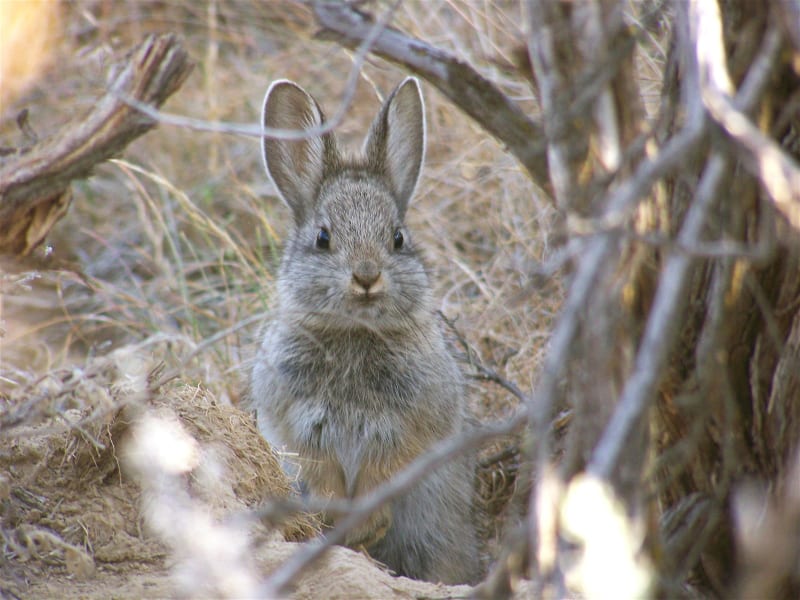
Pygmy Rabbit Facts
- Most notably, the gorgeous Pygmy Rabbit represents the world’s smallest known species of rabbit. But its size its isn’t only interesting trait. That’s because the fascinating, and adorable, animal also represents one of only two species of rabbit native to its area that digs it own burrows.
- Sadly, its habitat range also qualifies as extremely small, at least compared to some related species. Furthermore, this already highly restricted range of habitation continues to shrink. As with many creatures on the earth today, the actions of man play a role in this sad fact.
- Yet despite,these lamentable factors, its numbers appear to be sufficient and stable, at least for the moment. For this reason, the IUCN currently lists this delightful small mammal as Least Concern. Yet, the country in which it appears lists the remarkable animal as Endangered.
- However, its status with the IUCN could rapidly change for the worse, if environmental factors continue to deteriorate. Since the Pygmy Rabbit remains dependent upon specific habitat requirements, it could be threatened by ongoing climate change, even more than most species.
Related Articles
Pygmy Rabbit Physical Description
First of all, the truly gorgeous Pygmy Rabbit quite easily earns its common name. That’s because the adults of this remarkably tiny species only attain an average weight of about 1.1 lb (0.5 kg). Furthermore, individuals attain an overall body length measuring between 9.3 – 11. 6 in (23.5 – 29.5 cm).
In addition, like many related species, the beautiful little animal displays a moderate degree of the trait of sexual dimorphism. In its particular case, this appears in terms of physical size. That’s because females typically reach a slightly greater length and weight than their male counterparts.
This unique animal also develops a striking physical appearance, as well. For one thing, its ears remain quite small, in relation to the rest of its body, at least in comparison with related species. It usually displays a light gray color on most of its body. However, it also has a conspicuous lack of white fur on its short tail.
- Kingdom: Animalia
- Phylum: Chordata
- Class: Mammalia
- Order: Lagomorpha
- Family: Leporidae
- Genus: Brachylagus
- Species: B. idahoensis
Pygmy Rabbit Distribution, Habitat, and Ecology
Most notably, the stunning little animal we call the Pygmy Rabbit inhabits a specific and extremely limited portion of the western United States, in North America. This region only consists of the portion of the country known as the Great Basin region, as well as adjacent mountainous areas.
Yet to be even more specific, this rare animal only inhabits altitudes ranging from 4,495 – 7,005 ft (1,370 – 2,135 m), depending on location. Further, it displays a decided preference for those areas having deep, loose soil, and especially dense, tall sagebrush. These provide t a measure of camouflage.
In addition, each individual or family appears to claim and protect its own tiny territory. Indeed, research also indicates that most individuals never stray more than 330 ft (100 m) from the burrow. Therefore, the nature of its surroundings also serve to provide it with a convenient source of food.
Finally, the amazing Pygmy Rabbit primarily prefers to feed on the sagebrush in most of the areas it inhabits. However, Nature has its own balance. As a result, this animal itself serves as prey to a variety of carnivores in the region. These include weasels, coyotes, red foxes, badgers, bobcats, owls, and hawks.
Species Sharing Its Range
Check out our other articles on 9 Truly Magnificent Mantises, Goblin Shark, Bisti-De-Na-Zin Wilderness, Ascension Island Parsley Fern, Coral Pink Sand Dune Beetle, Geoffroy’s Cat, Green Iguana
